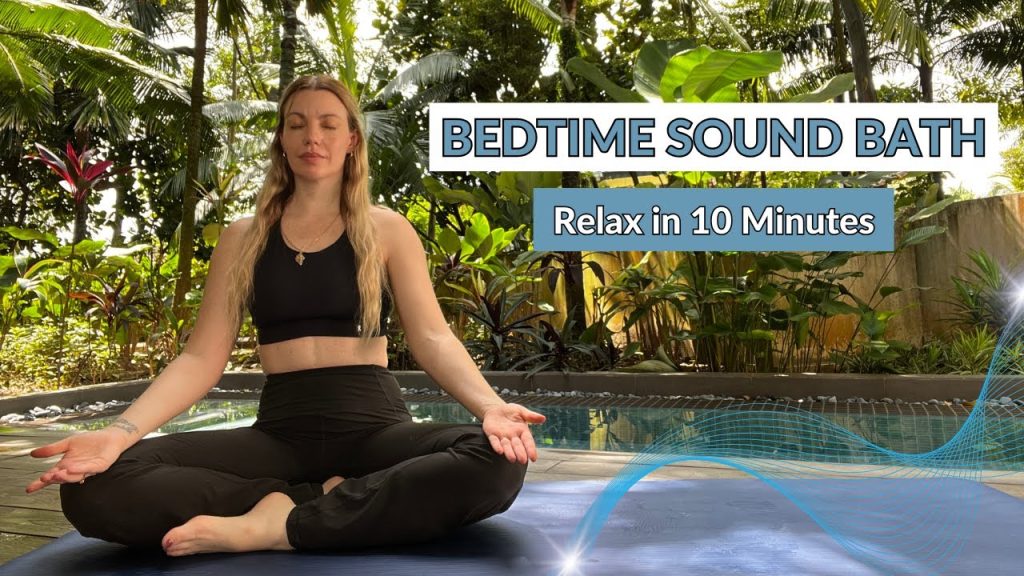Mindful Relaxation: Breathing Techniques to Deepen Your Meditation During Bathing

Creating a Peaceful Bathing Ritual
In a world driven by constant activity and noise, it can be challenging to carve out time for self-reflection and relaxation. The practice of mindful relaxation techniques, particularly during the simple act of bathing, offers a profound opportunity to reconnect with oneself and find peace amid the chaos.
Bathing is more than mere physical cleansing; it symbolizes a ritual present in cultures worldwide, utilized for both hygiene and spiritual rejuvenation. When you take time to enhance your bathing experience with breathing techniques, you can elevate it from a routine chore to a sacred, transformative ritual. Here are some compelling reasons to intertwine mindful breathing with your bathing practice:
- Creates a calming atmosphere conducive to mental relaxation and introspection.
- Enhances self-awareness, as focusing on your breath encourages you to tune into your body and mind.
- Deepens relaxation through the consistent practice of rhythmic breathing, allowing stress to melt away.
In Nigeria, the fusion of traditional practices with modern lifestyles may find expression in mindful bathing rituals. Taking a moment to breathe deeply while soaking in warm water can infuse your daily routine with peace and intention, allowing the stresses of the day to dissipate like steam. For example, after a long day navigating the hustle and bustle of city life, this mindful approach can create a sanctuary right in your home, promoting tranquility and mental clarity.
To delve deeper into these breathing techniques, one could explore methods such as the 4-7-8 technique, where you inhale for four counts, hold for seven, and exhale for eight. This particular pattern not only calms the mind but helps to engage the body’s relaxation response. Additionally, you can experiment with visualization, picturing each exhalation as a release of tension from your muscles.
As you explore various breathing techniques in your bathing practices, you may notice a shift in how you perceive your bathing ritual. What once was a mundane task can evolve into a cherished time of reflection and peace, enriching both your daily life and overall well-being. The benefits of integrating mindfulness into bathing can ripple into other areas of life, promoting a sustained sense of calm that lasts beyond your time in the water.

Ultimately, discovering the unique interplay between breath and the bathing ritual can lead to profound moments of clarity, serenity, and self-discovery—elements that are incredibly vital in today’s fast-paced society. Embrace this sanctuary of stillness and let your breath guide you on a journey toward inner peace and mindfulness.
ADDITIONAL INSIGHTS: Expand your understanding here
Breathing Techniques to Enhance Your Bathing Experience
When it comes to integrating mindful relaxation into your daily routine, breathing techniques play a pivotal role, particularly during the transformative experience of bathing. Understanding and applying these techniques can not only enhance relaxation but also deepen meditation, allowing you to reap the full benefits of your bathing ritual.
In settings like Nigeria, where traditional values often blend seamlessly with contemporary lifestyles, a mindful bathing experience includes the ability to cultivate quietude amidst the frenetic pace of life. Harnessing the power of your breath can help transition your bathing experience into a more meditative state. Here are several effective breathing techniques to consider:
- Diaphragmatic Breathing: This technique, often referred to as belly breathing, involves inhaling deeply through your nose, allowing your diaphragm to expand rather than your chest. As your belly rises, visualize the calming water enveloping you, and exhale slowly through your mouth. This technique not only promotes a sense of relaxation but also facilitates deeper meditation.
- Box Breathing: Another effective technique, particularly for beginners, is box breathing, where you inhale for four counts, hold for four, exhale for four, and then hold again for four. This rhythmic pattern can help stabilize your focus while you sink into the warmth of your bath, encouraging mindful awareness.
- Nadi Shodhana (Alternate Nostril Breathing): This ancient yogic practice is known for balancing the mind and body. To practice, close your right nostril with your thumb and inhale deeply through your left nostril. At the top of the breath, close the left nostril with your ring finger, releasing your right nostril and exhaling. Alternate for several rounds. The soothing effect of this technique makes it an excellent addition, particularly when paired with the tranquil environment of a warm bath.
Incorporating these breathing techniques during your bath can transform the ritual into a deeply personal cleansing experience that resonates with both your physical and emotional well-being. As you focus on the breath, you may find yourself more connected to your thoughts and feelings, unlocking pathways for introspection.
It is crucial to create an environment that fosters this practice. Consider dimming the lights, using fragrant oils or bath salts infused with essential oils, or even playing soft, calming music to enhance your overall experience. The ambiance you set can significantly amplify the effects of your breathing exercises, making the entire bathing ritual feel more serene and intentional.
As you continue to explore how mindful relaxation through breathing can deepen your meditation during bathing, you may notice a change that extends beyond the tub. The tranquility and clarity you cultivate in these moments can carry over into your everyday life, providing a sense of calm that helps you navigate the bustling surroundings of urban life in Nigeria.
| Category | Details |
|---|---|
| Breathing Techniques | Utilizing specific techniques can enhance focus and calmness. |
| Enhanced Relaxation | Breathing practices can deepen your meditative state, leading to profound relaxation. |
As you explore the concept of Mindful Relaxation, the power of breathing techniques during your bathing experience becomes evident. Incorporating techniques, such as the 4-7-8 breathing method, where you inhale for 4 seconds, hold for 7, and exhale for 8, can dramatically increase your sense of peace. This practice engages your parasympathetic nervous system, encouraging a state of deep relaxation that allows stress to melt away.Moreover, using this time to focus on your breath creates a meditative atmosphere in the bath. The sound of running water paired with the rhythm of your breath invites a serene ambiance. Additionally, you can synchronize your inhalations and exhalations with the flow of water, creating a unique mindfulness experience. This connection not only helps promote awareness but also enhances feelings of tranquility and connectedness. Ultimately, immersing yourself in purposeful breathing during your bath can forge a transformative experience, elevating your meditation practice to deeper levels of understanding and fulfillment.
CHECK OUT: Click here to explore more
Creating a Mindful Environment for Deep Meditation
As you delve deeper into the realm of mindful relaxation, creating a suitable environment for your bathing ritual becomes paramount. The space in which you unwind can greatly influence your capacity to engage with the breathing techniques previously mentioned. In many Nigerian homes, the act of bathing isn’t just about hygiene; it’s a sacred time to reflect, revitalize, and recalibrate one’s mental state. By tailoring this experience to encompass both physical comfort and emotional tranquility, you can elevate your practice significantly.
To start, consider the concept of sensory stimulation and how it interfaces with your meditation. The use of ambient lighting can have profound effects on your mood. Soft, warm lighting can evoke feelings of serenity and peace, while harsh lighting may create stress or distraction. Incorporating candles or dimmable lights can provide an inviting glow, enhancing this calming ambiance. Also, leveraging natural light, where possible, can connect you to nature, adding an extra layer of tranquility to your bath. Imagine the sun setting as the rays gently infiltrate your bathroom, while you engage in your breathing exercises.
Aroma has long been heralded for its therapeutic properties, and this is where essential oils come into play. In Nigeria, local oils such as sandalwood, lavender, or lemongrass can add a calming scent to your bath while also integrating cultural familiarity. Incorporating these scents into your bathing ritual through aromatherapy infusions can deepen your meditation experience. Fill your bath with fragrant bath salts enriched with these oils, allowing their soothing properties to mingle with the steam, creating an enveloping cocoon of serenity.
Additionally, sound is an essential component for fostering a mindful atmosphere. While silence can be golden, soft background music or nature sounds can help anchor your focus and further promote relaxation. You might consider creating a playlist featuring soothing tracks from local Nigerian artists or styles that resonate with you. The gentle melodies combined with the rhythmic sound of water can act as a focal point during meditation, allowing you to drift deeper into your breathing practice.
In terms of practicality, ensure your bathing area is clutter-free. A tidy space enhances mental clarity, which is crucial for effective meditation. Engage in a quick clean-up of the bathroom before your bath — remove any distracting items that may catch your eye and distract the mind. This small act can significantly transform your bathing experience into a space of pure relaxation.
Lastly, consider incorporating mindfulness visuals into your bathing practice. The use of relaxing imagery, whether through prints or digital art displayed on a nearby device, can help center your thoughts. For example, consider placing images of serene landscapes from places in Nigeria, such as the peaceful waters of Elegushi Beach or the tranquil views of Afi Mountain Wildlife Sanctuary, to soothe the mind.
These elements work in harmony to create an immersive environment that not only elevates your bath into a ritual of mindful relaxation, but also enhances the breathing techniques utilized during this intentional time. By marrying physical, mental, and emotional aspects of your bathing experience, you are more likely to achieve the deep, restorative state of meditation that may carry over into your daily life.
YOU MAY ALSO LIKE: Read read another article
Conclusion: Embracing Mindful Relaxation in Daily Life
In conclusion, the integration of mindful relaxation through breathing techniques during bathing opens a gateway to a unique blend of rejuvenation and introspection. As we navigate through life’s challenges, the simple act of immersing oneself in water can transform into a sacred ritual that nurtures both the body and mind. By harnessing sensory stimulation—from soothing aromas of local essential oils to tranquil lighting and sounds—your bathing ritual can become a sanctuary of peace, allowing you to deepen your meditation practice.
The provided techniques highlight the importance of establishing a comfortable and inviting atmosphere, underscoring that the environment plays a pivotal role in enhancing your experience. Whether you draw inspiration from the beauty of nature, like the ethereal landscapes of Nigeria, or curate a space free from distractions, the key lies in engaging fully with the present moment. Mindfulness is about embracing this space for reflection and revitalization, cultivating an emotional refuge capable of reverberating through your daily interactions.
Ultimately, the journey into mindful relaxation should be embraced as a continual practice, a small yet powerful investment in your well-being. As you explore these techniques and look to customize your bathing experience, remember that the path to inner tranquility is unique for everyone. Allow yourself to discover new dimensions of peace, both in the sanctuary of your home and in your everyday life. By prioritizing mindfulness during these moments of self-care, you foster a deeper connection within yourself that propels you toward a more balanced existence.



